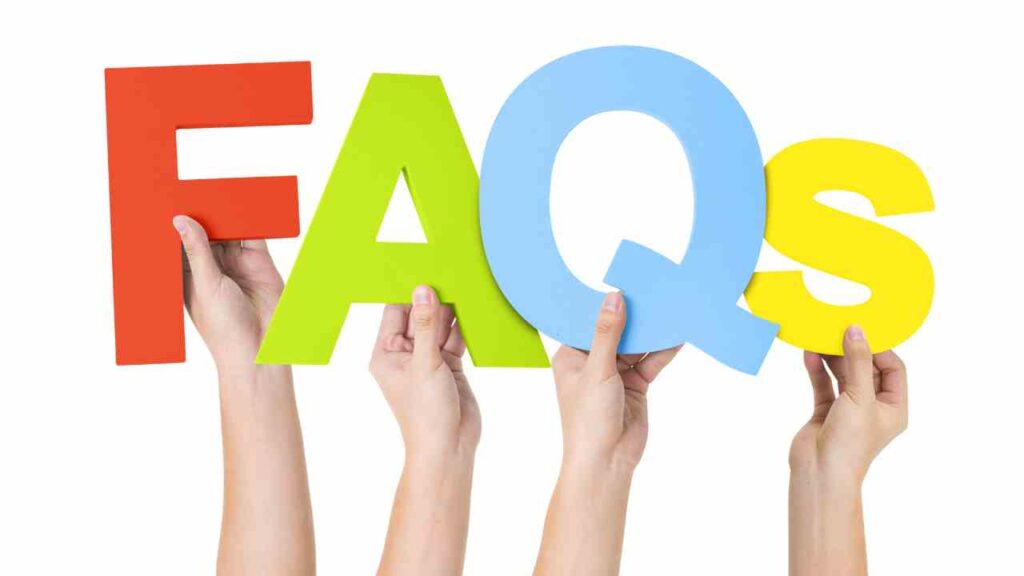How to Target Customers for CRM

Customer Relationship Management (CRM) is a vital tool for businesses to effectively manage their interactions with customers. By implementing a CRM system, companies can streamline their sales and marketing processes, improve customer satisfaction, and ultimately drive revenue growth. However, in order to fully leverage the benefits of CRM, it is crucial to target the right customers. In this article, we will explore various strategies and techniques to effectively target customers for CRM.
1. Define Your Ideal Customer Profile
The first step in targeting customers for CRM is to clearly define your ideal customer profile (ICP). This involves identifying the characteristics and attributes of customers who are most likely to benefit from your products or services. By understanding your ICP, you can tailor your CRM efforts to attract and engage these specific customers.
Here are some key factors to consider when defining your ICP:
- Demographics: Consider factors such as age, gender, location, and income level. For example, if you are selling luxury goods, your ICP may be affluent individuals in urban areas.
- Industry or niche: Determine the industries or niches that align with your offerings. This will help you focus your CRM efforts on customers who are more likely to have a need for your products or services.
- Behavioral patterns: Analyze the behavior of your existing customers to identify common patterns. This could include their purchasing habits, online activities, or engagement with your brand.
- Needs and pain points: Understand the specific needs and pain points of your target customers. This will enable you to tailor your CRM messaging and offerings to address their unique challenges.
By clearly defining your ICP, you can create targeted marketing campaigns and personalized customer experiences through your CRM system.
2. Utilize Data Analytics
Data analytics plays a crucial role in targeting customers for CRM. By analyzing customer data, you can gain valuable insights into their preferences, behaviors, and needs. This data can then be used to segment your customer base and create targeted marketing campaigns.
Here are some ways to utilize data analytics for targeting customers:
- Segmentation: Divide your customer base into segments based on common characteristics or behaviors. This allows you to tailor your CRM efforts to each segment’s specific needs. For example, you may have a segment of customers who are price-sensitive and another segment that values premium features.
- Personalization: Use customer data to personalize your CRM communications. This could include addressing customers by their name, recommending products based on their past purchases, or sending targeted offers based on their preferences.
- Predictive analytics: Leverage predictive analytics to anticipate customer behavior and needs. By analyzing historical data, you can identify patterns and trends that can help you proactively engage with customers.
By harnessing the power of data analytics, you can make informed decisions and optimize your CRM efforts to target the right customers.
3. Implement Lead Scoring
Lead scoring is a technique used to prioritize and rank leads based on their likelihood to convert into customers. By implementing lead scoring in your CRM system, you can focus your efforts on leads that have the highest potential value.
Here’s how lead scoring works:
- Define scoring criteria: Determine the factors that indicate a lead’s potential value. This could include demographic information, engagement with your brand, or specific actions taken on your website.
- Assign scores: Assign scores to each criterion based on their importance. For example, a lead who has visited your pricing page multiple times may receive a higher score than a lead who has only visited your blog.
- Calculate lead scores: Calculate the overall lead score by summing up the scores from each criterion. This will help you prioritize leads and focus your CRM efforts on those with the highest scores.
By implementing lead scoring, you can ensure that your sales and marketing teams are targeting the most promising leads, resulting in higher conversion rates and improved ROI.
4. Leverage Behavioral Triggers
Behavioral triggers are specific actions or events that prompt a targeted response from your CRM system. By leveraging behavioral triggers, you can automate personalized interactions with customers based on their actions or behaviors.
Here are some examples of behavioral triggers:
- Abandoned cart: If a customer adds items to their cart but doesn’t complete the purchase, you can automatically send them a reminder email with a special offer to encourage them to complete the transaction.
- Website visit: When a customer visits a specific page on your website, such as a product page or pricing page, you can trigger a personalized email or notification with relevant information or offers related to that page.
- Customer anniversary: Send a personalized email or offer to customers on their anniversary of becoming a customer. This can help strengthen the customer relationship and encourage repeat purchases.
By leveraging behavioral triggers, you can deliver timely and relevant communications to your customers, increasing engagement and driving conversions.
5. Continuously Refine and Optimize
Targeting customers for CRM is an ongoing process that requires continuous refinement and optimization. It is important to regularly review and analyze the results of your CRM efforts to identify areas for improvement.
Here are some strategies to refine and optimize your CRM targeting:
- A/B testing: Test different variations of your CRM campaigns to determine which ones resonate best with your target customers. This could include testing different subject lines, call-to-action buttons, or offers.
- Monitor customer feedback: Pay attention to customer feedback and reviews to identify any pain points or areas of improvement in your CRM processes. Addressing these issues can help enhance the customer experience and increase satisfaction.
- Track key metrics: Monitor key metrics such as conversion rates, customer lifetime value, and customer satisfaction scores. This will help you measure the effectiveness of your CRM targeting strategies and make data-driven decisions.
By continuously refining and optimizing your CRM targeting, you can ensure that your efforts are aligned with the evolving needs and preferences of your customers.
Targeting customers for CRM is a critical aspect of maximizing the benefits of CRM systems. By defining your ideal customer profile, utilizing data analytics, implementing lead scoring, leveraging behavioral triggers, and continuously refining and optimizing your efforts, you can effectively target the right customers and drive business growth.
Remember, implementing a CRM system is just the first step. To truly harness its power, you need to target the right customers and tailor your CRM efforts to their specific needs and preferences. With the right strategies and techniques in place, you can build stronger customer relationships, increase customer satisfaction, and drive revenue growth.
For an all-in-one sales and marketing platform that can help you target customers for CRM, check out SaasExpert.ca. It offers a comprehensive suite of tools and features designed to streamline your CRM processes and drive business success.
Learn more about “Segmenting Audiences for CRM Marketing” right here.
Frequently asked questions about How to Target Customers for CRM.

1️⃣ What is Customer Targeting in CRM, and Why Does It Matter? 🤷♀️
👉 Answer: Picture this: You’re a chef in a restaurant. Would you serve spicy food to someone who dislikes it? Absolutely not! Similarly, customer targeting in CRM means serving the right “dish” to the right “diner.” 🍽️
In technical jargon, targeting is the art of using data to zero in on specific customer groups for tailored marketing campaigns. Why is it crucial? Because generalized messages are a thing of the past! Today’s customers crave personalization and relevancy. Targeting helps you deliver just that, boosting conversions, engagement, and loyalty! 🚀💕
2️⃣ How Can I Use CRM Data for Effective Customer Targeting? 📊
👉 Answer: CRM data is your treasure trove—your “map” to customer gold! 🗺️💰 Most CRM systems will give you rich data on customer demographics, buying behavior, interaction history, and even social media activity.
Here’s how to use it:
Identify high-value customers: Look for those who have a higher Customer Lifetime Value (CLV) and target them with premium offers. 🎁
Behavioral targeting: Use purchase history and interactions to target customers with related products or services. 🎯
Seasonal targeting: Leverage seasonal trends and previous year data for timely offers. 🌸❄️
Basically, the more you know about your customers, the better you can target them! 🎯👥
3️⃣ What Types of Campaigns Can I Run by Targeting Customers Through CRM? 📢
👉 Answer: Ah, the possibilities are endless! 🌈
Email Campaigns: Send personalized emails based on user behavior or milestones, like birthdays or anniversaries. 💌🎉
Retargeting Campaigns: Target customers who’ve interacted with your website but didn’t make a purchase. 🎯🛒
Loyalty Programs: Reward your high-value customers to keep them coming back for more. 🌟🎁
Flash Sales: Use historical buying data to offer flash sales to customers most likely to make a purchase. ⏰💵
Remember, the more personalized the campaign, the better the engagement! 🤝📈
4️⃣ How Do I Measure the Success of My Targeting Efforts? 📏
👉 Answer: If you’re not measuring, you’re guessing—and in the business world, guessing can be expensive! 💸 Key metrics to track include:
Conversion Rates: Are more people taking the desired action? 📈
Customer Lifetime Value (CLV): Has it increased with targeted efforts? 💰📊
Return on Investment (ROI): Are you getting more bang for your marketing buck? 💥💵
Customer Satisfaction: Higher personalization should ideally lead to happier customers. 😃
5️⃣ Can I Make Real-Time Adjustments to My Customer Targeting Strategy? ⏰
👉 Answer: In today’s fast-paced digital landscape, being able to pivot is a superpower—and yes, many CRM systems allow for real-time adjustments! 🎛️🚀 Say an email campaign isn’t performing well; you can quickly tweak the messaging or offer, and watch those metrics climb! 📈
So, are you ready to become a master of customer targeting with CRM? With the right data and strategy, you’ll be hitting those marketing bullseyes in no time! 🎯🌟






